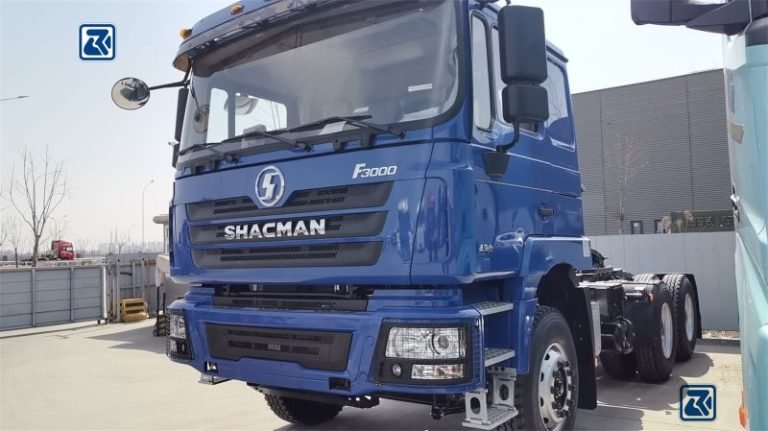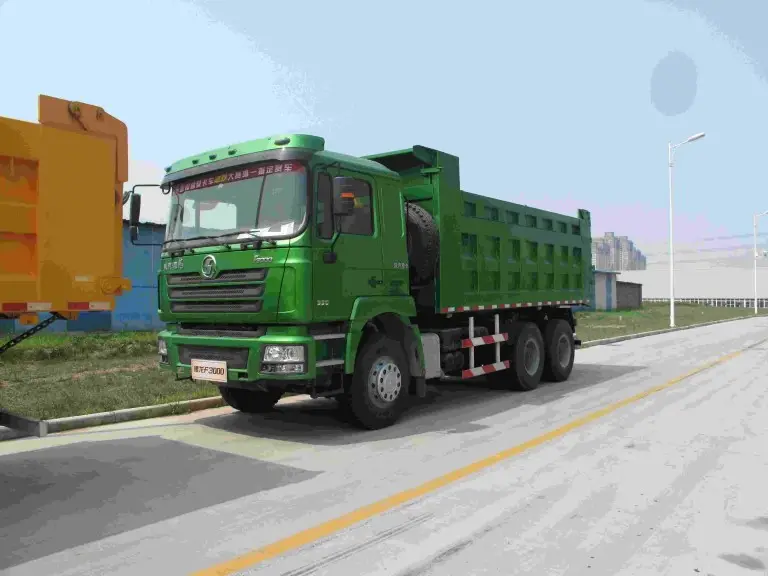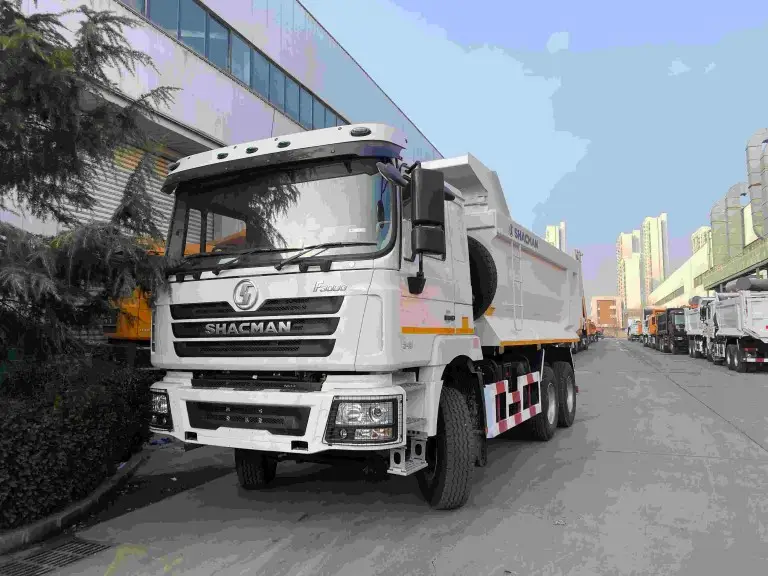SHACMAN Heavy Duty Truck Manufacturer is a leader in the industry.The SHACMAN Group has more than 50 years of experience in manufacturing heavy duty trucks. The Group has long occupied a leading position in the domestic market and is rapidly expanding in the international market. Inheriting 54 years of military vehicle technology, SHACMAN Group relies on the national enterprise technology center and postdoctoral workstation to continuously promote the innovation and development of heavy truck technology.
SHACMAN series heavy trucks have highly efficient power transmission systems. Lightweight design further improves fuel economy. Advanced intelligent driving technology optimizes driving experience. Excellent safety performance guarantees the safety of drivers and cargoes. Fuel efficiency is a core concern of enterprises, and SHACMAN tractor trailers achieve excellent fuel economy through advanced engine technology and optimized vehicle design.
The X3000 and F3000 series are equipped with high-torque and high-horsepower engines. These engines reduce fuel consumption while providing strong power. The trucks utilize turbocharging and advanced driveline technologies. These technologies not only reduce fuel use, but also comply with strict emission standards. According to statistics, the SHACMAN X3000 series is able to successfully reduce operating costs by 15% while significantly improving transportation efficiency. According to the latest market research, the sales volume of SHACMAN series heavy trucks in the international market has increased by 20%, which makes them extremely competitive in the market.
In this article, HOWO Special Truck Ltd will discuss the specific technology and design principles of fuel saving of SHACMAN tractor to help you make a more informed choice.
Table of Contents
The Importance of Fuel Efficiency in Heavy-Duty Vehicles
Fuel efficiency is crucial in the heavy-duty vehicle sector. It has a direct impact on operating costs and environmental impact, especially in the logistics and transportation industries where trucks consume large amounts of diesel. Therefore, it is crucial to improve fuel efficiency, which can help reduce the operating costs of enterprises. Improving fuel efficiency by $0.5 per kilometer can save hundreds of thousands of dollars throughout the year. At the same time, reducing fuel consumption can also significantly reduce greenhouse gas emissions. Reducing fuel consumption by 1% is equivalent to reducing carbon dioxide emissions by 100 tons per year.
As environmental regulations become increasingly stringent, truck manufacturers are forced to innovate. For example, the European Union requires a 15 percent reduction in CO2 emissions from heavy trucks. In this environment, the SHACMAN series of trucks has achieved a significant increase in fuel efficiency thanks to its superior technology. the X3000 series has achieved a 10% increase in fuel efficiency through the optimization of the driveline and low-drag tire technology. In actual use, the X3000 series can save 10 liters of fuel per 100 kilometers, which saves companies a lot of money.
Comparative Analysis of Shaman's Fuel Performance with Other Leading Brands
SHACMAN trucks are often compared to the fuel efficiency standards of other top brands such as Volvo, MAN and Scania. According to the data comparison, the fuel efficiency of SHACMAN X3000 series is 20L/100km, which meets the Euro V emission standard. In comparison, the Volvo FH16 series has a fuel efficiency of 21L/100km, while the MAN TGX series has a fuel efficiency of 19L/100km and the Scania R series has a fuel efficiency of 20.5L/100km.
SHACMAN’s Euro V engine and aerodynamic design are key to its fuel efficiency. With these technologies, SHACMAN not only saves fuel, but also provides enough power to adapt to heavy-duty transportation tasks. Compared with Volvo, SHACMAN’s driveline efficiency is 7% higher, further reducing fuel consumption.
According to customer feedback, SHACMAN X3000 series has enabled a logistics company to reduce fuel expenditure by 15%. In terms of market performance, SHACMAN’s heavy truck sales have increased by 25%, gradually approaching brands such as Volvo and MAN.
Technological Foundations of Fuel Efficiency
Shacman is dedicated to fuel efficiency. This dedication is based on a series of tech advances. These advances are clear across their vehicle range. They are especially clear in the Shacman X3000 and F3000 series. These trucks use a blend of high-tech engines and aerodynamic designs. They aim to cut fuel use while keeping high performance.
Engine Specifications: Shacman utilizes advanced engine technology designed to maximize fuel efficiency. The X3000 series, for example, is equipped with Cummins engines known for their fuel efficiency and reliability. The engines are designed to offer great power while using little fuel. They use technologies like turbocharging and intercooling. These techs boost engine power and efficiency.
Aerodynamic design: The streamlined design of the X3000 and F3000 series significantly reduces wind resistance and optimizes air flow. After CFD optimization, the wind resistance of the X3000 series cab is reduced to 0.53. This is a 15% reduction in air resistance compared to conventional designs, which significantly improves fuel efficiency.
Transmission System Optimization: The direct-connected transmission and high-efficiency drive axle effectively reduce the energy loss in the transmission system and improve the overall efficiency.
Intelligent Fuel Saving System: The Intelligent Fuel Saving System optimizes fuel consumption by monitoring driving conditions and loads and automatically adjusting fuel supply.
Shacman X3000 Series
Detailed Specifications
The Shacman X3000 series is designed to blend performance, comfort, and fuel efficiency. This makes it ideal for both regional and long-haul operations. Here are some detailed specifications:
Engine Types: The X3000 series features a range of engines. They include the Cummins ISM engine, which is known for its strong performance and environmental compliance. The engines vary in horsepower. They range from moderate to high power. They are suitable for different transport needs.
Horsepower: The engines in the X3000 series are typically 280 to 500 horsepower. They cater to various hauling needs.
Fuel Tank Capacity: The series offers many fuel tank sizes. Some models have tanks that hold about 400 to 600 liters. This lets them operate over long ranges without needing many refueling stops.
Features Enhancing Fuel Efficiency
Euro V Engine: This engine standard significantly reduces emissions and increases fuel efficiency. The X3000 has a Euro V engine. This shows that Shacman is committed to the environment. They are also keeping engine efficiency.
Advanced Transmission Systems: The series uses advanced transmission technologies. They include automated manual transmissions. These optimize gear shifts and cut fuel use. This enhances overall driving comfort and efficiency.
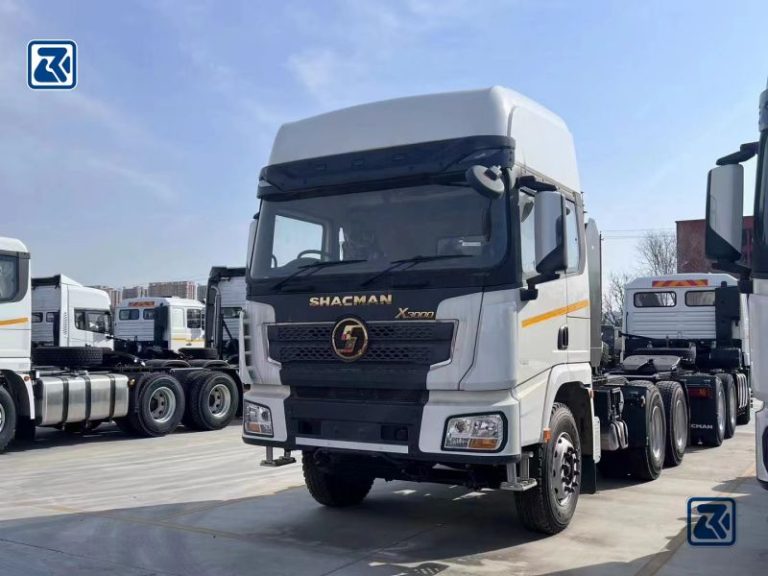
Shacman F3000 Series
Features and Benefits
The F3000 series is known for its sturdiness and adaptability. It has many features that improve its fuel efficiency:
Aerodynamic Design: The F3000 trucks have a streamlined cab design. It reduces air drag a lot. This is crucial for fuel efficiency, especially at higher speeds.
Engine Technology: The F3000 series includes high-performance engines. They, like the X3000, meet strict emission standards while offering great fuel economy. These include engines. They have technologies such as common rail fuel injection and turbocharging. These technologies boost combustion efficiency and cut fuel use.
Comparison of Different Models
The F3000 series has several models. They vary slightly in engine power, cabin type, and intended use:
Long-Haul vs. Regional Applications: Some models are for long-haul operations. They have larger fuel tanks and more powerful engines. Others are for shorter, regional journeys. They focus on maneuverability and fuel efficiency.
Fuel Performance: Depending on the model and configuration, the fuel performance can vary. Models for long-haul have features that optimize fuel use over long distances. They have things like more efficient engines and aerodynamic features.
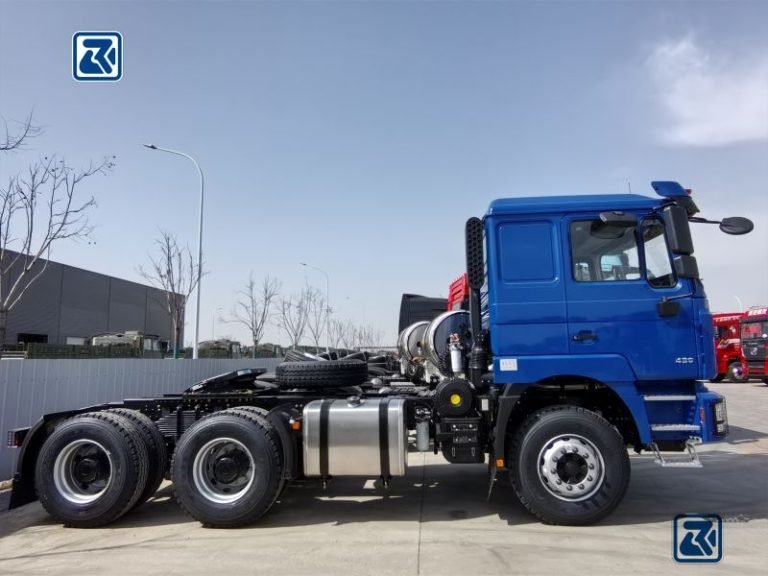
Conclusion
Shacman trucks have proven their worth in the heavy-duty truck market. They do it by focusing on advanced engines, aerodynamic efficiency, and strong transmissions. These innovations boost fuel efficiency. They also cut costs. This is especially true for long-haul transportation. This strategy focuses on fuel efficiency. It aligns Shacman trucks with both economic benefits and environmental sustainability. This makes them a smart choice for businesses aiming to optimize their logistics and transportation. For those interested in exploring Shacman tractor truck options or seeking competitive quotes, contacting HOWO Special Truck Ltd could provide useful insights. You might also find the best pricing available.
FAQ
Shacman uses Euro V engines. They are known for low emissions and high efficiency. The engines have modern fuel injection and turbocharging. In addition, Shacman trucks have sleek designs to cut air drag. They also have advanced transmissions that optimize gear ratios. This boosts fuel economy a lot compared to many competitors.
Aerodynamics significantly influences fuel efficiency, particularly at higher speeds. Shacman trucks are designed for aerodynamic efficiency. They have streamlined cabs and chassis configurations that cut air resistance. This cut in drag lowers fuel use. It makes Shacman trucks more efficient on long hauls.
Yes, Shacman trucks are fuel efficient. They can notably cut the costs of long-haul transport. These trucks decrease fuel use. This cuts a major cost in logistics and transport. Using fuel efficiently means fewer refueling stops. This brings less downtime and longer ranges. These all lead to big cost savings and better productivity.

